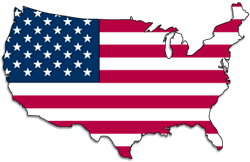2 November 2021
By Roger Jones
roger@TheCork.ie
Many patients are confused about which option to take for their ailments. CBD, or cannabis without THC, has been shown to have significant medical benefits with no psychoactive side effects. It’s the perfect treatment for people who do not want to experience any effect on their mind, but still want relief from pain and inflammation. Meanwhile, THC works well in combination with CBD because it has many of the same properties as CBD (anti-inflammatory and anti-pain) but can have soothing mental effects for some.
If you have only recently begun using cannabis, or want to know more about CBD or THC since it is talked about so often since legalization, here is what you need to know about each.
What is THC?
THC is what many people refer to when they talk about marijuana, and this is because THC is the most prevalent cannabinoid in the plant. THC, or tetrahydrocannabinol, is the cannabinoid that is mainly responsible for the psychoactive effects experienced when consuming marijuana.
When it comes to whether or not THC is legal, this would depend entirely on whether or not marijuana is legal in your state, although most consumption methods are legal and can be found online at sites like Daily High Club, which sells devices such as dab rigs, pipes, bongs and more.
Benefits of THC
The benefits of THC are very similar to the benefits of CBD, and whilst many studies are still underway, some of the benefits include help with anxiety, muscle spasticity, low appetite, glaucoma, pain, nausea, insomnia, and more.
The reason THC and CBD offer so many benefits has to do with how the cannabinoids interact with the endocannabinoid system. In terms of pain management, cannabinoids essentially block the transmission or intercept the transmission of pain signals. This in turn causes a reduction in pain. In terms of anxiety or PTSD, the amygdala is affected, and marijuana changes the way the brain responds to perceived threats.
What is CBD?
This is the big question that is asked by many people, and the biggest misconception about CBD is that it gets you high; this is untrue. CBD stands for cannabidiol, which is one of over 100 cannabinoids that are found within the marijuana plant and happens to be the second most prevalent, accounting for around 40% of the extract from the plant.
The next question that is commonly asked is “Is CBD legal?”. The answer to that question is slightly complicated; if the CBD contains less than 0.3% THC, then it is completely legal. There are of course CBD products that contain more, and state laws would determine if that would be legal or not.
Benefits of CBD
The next thing that people are now wondering about is what are the benefits that can be gained from consuming CBD, and if it has any benefits at all. There are many studies underway to answer this question, and studies that have been done shed some light on this topic. Some of the benefits of CBD are:
Insomnia – studies have shown that CBD can be effective at helping someone to fall asleep
Addiction – studies have also shown that CBD can help someone cope with addiction by lowering the cravings experienced, especially for addiction to things like stimulants, opiates, cannabis, tobacco, alcohol, and heroin.
Chronic pain – studies show that because CBD is effective at preventing or reducing neuropathic and inflammatory pain, although more studies need to be conducted.
Anxiety – There is an idea that CBD can help reduce anxiety, clinical trials are underway to investigate this.
Different Consumption Methods
Since the legalization of recreational marijuana, and quite possibly since the legalization of medicinal marijuana, many new consumption methods have entered the market. The traditional way of consuming marijuana would be by using a bong or a joint; both of these methods have fast onset times, around 5-10 minutes, and both have a duration of around 2 hours, depending on the amount of marijuana consumed.
There are now also devices called dab rigs, which look like bongs, but instead of using flowers, they use marijuana concentrate. This concentrate often contains far more THC than what is consumed when using a bong or joint. There are even electronic devices called dry herb vaporizers, which instead of using combustion to burn the marijuana, use heating methods called convection and conduction to cause the marijuana to reach a temperature that allows it to vaporize.


